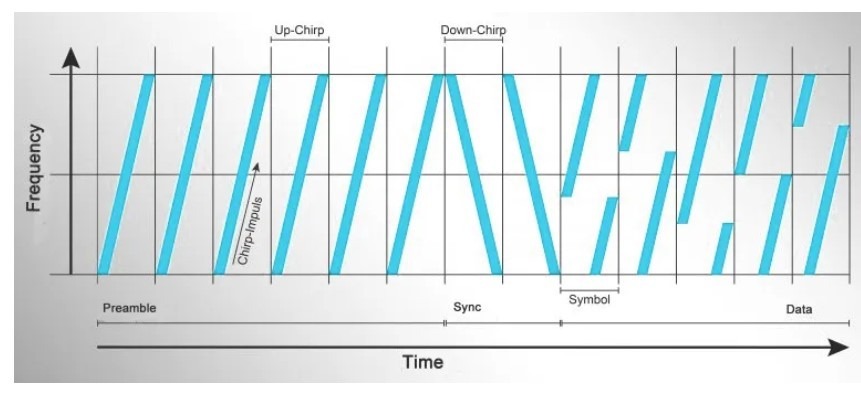The Power of Chirp Spread Spectrum (CSS): History, Techniques, and Applications
Introduction
Chirp Spread Spectrum (CSS) is a unique modulation technique renowned for its robustness, long-range capabilities, and interference resistance. Though less commonly known than other modulation methods, CSS has significantly impacted wireless communication, particularly in the Internet of Things (IoT). This article explores the history of CSS, how it works, its various uses, benefits, and further resources for understanding its significance.
1. The History of Chirp Spread Spectrum
CSS has its roots in mid-20th-century military and aerospace research. During World War II, the need for secure and interference-resistant communication led to the development of various spread spectrum techniques, including CSS. The U.S. military explored these methods to create communication systems that were difficult to jam or intercept, enhancing operational security.
During the Cold War, CSS was further developed and used in military applications such as radar and sonar systems. In radar, CSS enabled accurate range detection and target identification, while in sonar, it helped in detecting and identifying underwater objects. The technology was also utilized in military satellite communications, where its ability to maintain signal integrity over long distances and resist interference proved invaluable.
2. Understanding CSS Modulation Techniques
CSS employs chirps—signals that sweep in frequency either up or down over time. Each symbol in a CSS-modulated signal is represented by a chirp, which can sweep linearly or exponentially. Key aspects of CSS modulation include:
- Frequency Sweeping: The signal sweeps across a wide bandwidth, making it less susceptible to interference.
- Spread Spectrum: CSS spreads the signal over a broad range, enhancing its resistance to noise and interference.
- Processing Gain: The wide bandwidth of chirp signals provides a processing gain, allowing receivers to detect signals even below the noise floor.
- Doppler Tolerance: CSS can handle frequency shifts caused by the relative motion between transmitter and receiver, making it suitable for mobile and long-distance applications.
3. Applications of CSS
CSS has been adapted for various uses beyond its military origins, including:
- LoRa Technology: One of the most prominent applications of CSS is in LoRa (Long Range) technology, used in IoT networks for long-range, low-power communication between devices like sensors and trackers.
- Radar Systems: CSS is used in radar for object detection and ranging, providing high-resolution measurements resistant to interference.
- Smart Agriculture: In smart farming, LoRa-enabled CSS sensors monitor environmental factors like soil moisture and temperature across vast fields, transmitting data over long distances.
- Smart Cities: LoRa networks using CSS are employed in smart city infrastructure for managing street lighting, waste collection, and environmental monitoring.
- Asset Tracking: CSS is utilized in logistics and supply chain management to track goods and assets over wide areas.
4. Benefits of CSS
CSS offers several advantages that make it ideal for a range of communication needs:
- Long-Range Communication: Its ability to transmit data over long distances with low power makes CSS suitable for applications like IoT, where devices may be spread across wide areas.
- Interference Resistance: The spread spectrum nature of CSS makes it highly resistant to interference and noise, ensuring reliable communication even in congested environments.
- Low Power Consumption: Suitable for battery-operated devices, CSS enables extended operational lifetimes by allowing low-power transmission.
- Robustness to Multipath Fading: CSS is less affected by multipath fading, which occurs when signals take multiple paths to reach the receiver, making it effective in urban or indoor environments.
5. CSS in Modern Technology
In addition to military applications, CSS’s transition to civilian use has led to its implementation in various technologies. It has been particularly influential in IoT networks, where LoRa technology leverages CSS for connecting low-power devices across long distances.
Further Reading
- Understanding LoRa and Its Applications in IoT: LoRa, which stands for Long Range, is a wireless communication technology that utilizes CSS for transmitting data over long distances with low power consumption. This reading delves into how LoRa works, its use cases in IoT, and the role CSS plays in enabling its long-range capabilities.
- The Evolution of Spread Spectrum Techniques: Spread spectrum techniques, including CSS, have evolved over time, finding applications in both military and civilian communication systems. This resource explores the history and development of spread spectrum methods, their various forms (like Frequency Hopping Spread Spectrum and Direct Sequence Spread Spectrum), and their impact on modern wireless communication.
- How Chirp Spread Spectrum Works: A Technical Breakdown: For those interested in the technical aspects of CSS, this reading provides a detailed explanation of how chirp signals are generated, modulated, and demodulated. It covers the mathematical underpinnings of CSS, including frequency sweeping and processing gain, offering a deeper understanding of why CSS is so effective in long-range, low-power communication.
Conclusion
Chirp Spread Spectrum is a versatile and powerful modulation technique that has enabled a wide range of applications requiring long-range, low-power, and interference-resistant communication. From its early use in military communications to its current role in IoT networks like LoRa, CSS remains a critical technology in the field of wireless communication, driving the future of connected devices.
This structure provides an in-depth exploration of CSS, including its historical development, technical operation, and practical applications. The further reading section offers resources for readers interested in diving deeper into specific aspects of CSS and its related technologies.
